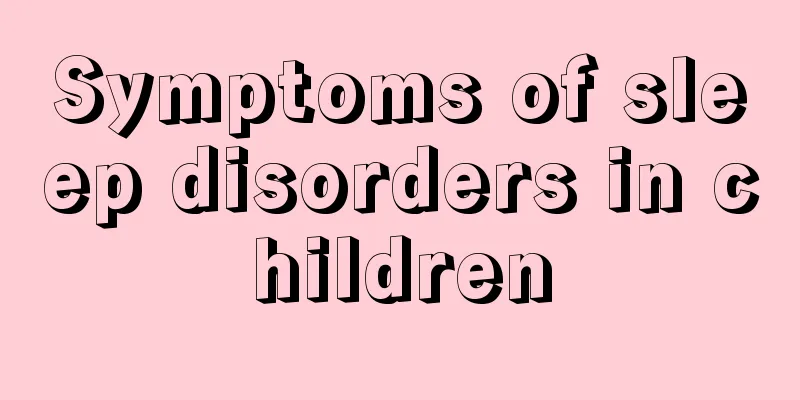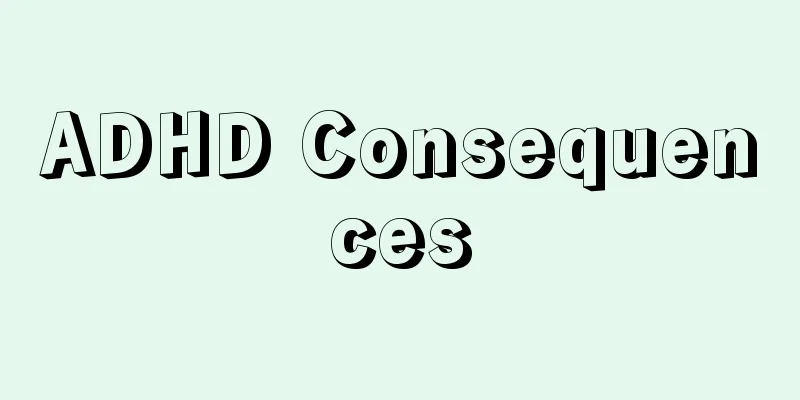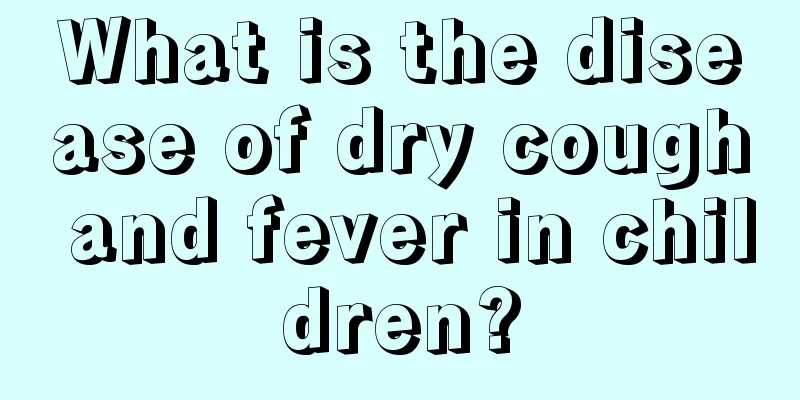Symptoms of sleep disorders in children

|
Children are the apple of their parents' eyes, and any problem with their children will be magnified by their parents. Some parents sometimes encounter this situation, but their children have sleep disorders and can't fall asleep no matter how hard they try, and sometimes even don't want to sleep. This is actually caused by children's sleep disorders. So what measures should be taken to solve such problems? What are the specific manifestations of sleep disorders in children? Causes Children's sleep disorders are a series of diseases. The specific causes of different diseases are not the same, but from the perspective of the occurrence of the disease, its causes are mainly the following aspects: 1. Genetic factors These children's sleep disorders are mainly caused by genetic abnormalities, the most typical of which is narcolepsy. 2. Environmental factors Sleep diseases occur in the brain, which is the human organ that is most frequently in direct contact with the external environment. Environmental factors have a significant impact on the brain and have become one of the main factors causing sleep disorders in children. The most typical sleep disorder in children is sleep-related disorders. 3. Genetics and environment work together Most childhood sleep disorders are the result of a combination of genetics and environment. Brains with certain genetic traits are more susceptible to sleep disorders in certain specific environments. 4. Other physical diseases The most typical disease that affects children's sleep function is sleep apnea syndrome in children. Generally speaking, the causes of sleep disorders in children are very complex and numerous, and may involve physical illness, hunger, thirst or overeating, improper parenting methods, poor sleeping habits, mental factors and environmental factors. It is also affected by social and psychological factors, such as family disputes, differences in parents' child-rearing concepts, economic conditions, the attitude of teachers at school, and interactions with classmates. Clinical manifestations Sleep disorders in children are composed of insufficient sleep time and a series of related symptoms. Related symptoms include snoring, laryngeal choking, apnea, mouth breathing, restless sleep, sweating, limb twitching, talking in sleep, teeth grinding, sleepwalking, and enuresis. The main forms of sleep disorders include: 1. Restless sleep and difficulty falling asleep It is more common in infants and young children, who often toss and turn, twitch their limbs, shake their heads repeatedly, cry for no reason, grind their teeth, and talk in their sleep. Some children are unwilling to go to bed and require to be carried and walked around, or they take a long time to fall asleep, have a shallow sleep, or wake up early. 2. Night terrors It is common in children aged 2 to 5 years old, and usually occurs about half an hour after falling asleep, with symptoms such as sudden screaming, crying, frightened expression, moving hands and feet, rapid breathing, increased heartbeat, sweating, and dilated pupils. During the attack, the EEG shows an alpha rhythm of awakening. Each night terror attack can last 1 to 10 minutes. The patient falls asleep again after the attack and completely forgets the episode after waking up. Generally, night terrors disappear on their own as you age. 3. Sleepwalking It is relatively common and is often accompanied by nocturnal enuresis. Some children have a family history of the disease. The main symptoms are repeated occurrences of suddenly sitting up or getting out of bed while in deep sleep 0.5 to 2 hours after falling asleep, with unclear consciousness, touching things here and there, wandering around, or playing games. It is difficult to wake up at this time, and the person can fall asleep quietly again after about a few minutes or half an hour, and completely forgets about the incident afterwards. treat In clinical practice, behavioral therapy is usually recommended as the main approach for the treatment of sleep disorders in children. Parents' support, encouragement and comfort are very important in solving sleep problems. They should understand their children's potential worries and provide possible support at any time. They should never use harsh intimidation or punishment. Sleeping time should also be regular and fixed, and changes should be kept to a minimum. The period before going to bed should be quiet and peaceful, and stimulating television should absolutely be avoided. For children with narcolepsy, help them establish a regular sleep schedule, avoid high-sugar foods, and provide more mental encouragement. Children with sleepwalking are at risk of getting hurt, so parents should pay more attention to their safety. After instructing parents to wake up their sleepwalking children regularly (i.e., waking them up a few hours after they fall asleep or before sleepwalking usually occurs), it was found that this measure had a significant effect in all children whose parents were instructed and was still effective in follow-up 6 months after treatment. For children with night terrors, they should still be prevented from sleeping in their parents' room. Giving them a warm bath, eating a small snack, and staying with them quietly for a while before going to bed can help them sleep. You can also light a night light for them or leave the door open. In terms of drug treatment, diphenhydramine, as a mild sedative, can be used for children with night terrors when necessary; monoamine oxidase inhibitors and alpha-adrenergic receptor stimulants are used to treat narcolepsy; diazepam and tricyclic antidepressants are used to treat sleepwalking; and melatonin is used to treat insomnia, etc., all of which have good therapeutic effects. |
<<: What causes children to lack sleep?
>>: Viral enteritis in a one and a half year old baby
Recommend
Three-year-old baby has heart murmur
If you find that your three-year-old baby has a h...
Symptoms and treatment of neonatal ADHD
Although neonatal ADHD is not a particularly seri...
What should I do if my five-year-old child coughs and has phlegm?
When a child has a cough, the parents are probabl...
Chinese medicine massage for children with cough
Nowadays, traditional Chinese medicine treatment ...
What are the medicines for treating diarrhea in children?
Diarrhea is one of the common diseases in life. M...
Newborns have brain hypoxia, parents should pay attention!
Neonatal cerebral hypoxia is a very serious condi...
Symptoms of facial eczema in children
Most children nowadays will encounter facial ecze...
What should I do if there is a big gap between my child’s front teeth?
Parents need to pay special attention when childr...
What fruit is good for children with phlegm?
Parents are most worried about their children cat...
What to do if your child lacks a sense of security
In real life, children often give people the impr...
How can I relieve long-term constipation in children?
Children's gastrointestinal function is relat...
What Chinese medicine should babies take when they have internal heat?
The baby's immunity is relatively weak, espec...
What are the benefits of children learning to paint?
Making their babies better is the common dream of...
What should children who often catch cold eat to improve their immunity?
When children are young, parents should try to fe...
The child shook his head unconsciously
Nowadays, many parents often find that their chil...









